John Hurrell – 17 June, 2013
Maddie Leach's 'The Most Difficult Problem' makes us think about the tunnels built during WW2 under Albert Park for air raid shelters. Her video of the entrance on Kitchener St, leading under the hill, suggests to visitors the white door is about to open but it never does - teasing (maybe annoying) her audience.
International group exhibition and forums
If you were to live here
Curated by Hou Hanru
10 May - 11 August 2013
In this third of a series of ongoing ruminations about aspects of Hou Hanru’s Auckland Triennial, I want to look at the role played by the imagination, a topic obviously intrinsically embedded in the very nature of art itself - especially art that aspires to be utopian. Nevertheless (bearing in mind these thematic categories are not exclusive: and one work can embrace several) some artworks here, in terms of mentally picturing, really push the viewer - admittedly in not as extreme a fashion as Michael Craig Martin’s An Oak Tree, or Robert Rauschenberg’s Portrait of Iris Clert - forcing them to envisage details deliberately not provided in visual imagery.
For example Maddie Leach’s The Most Difficult Problem makes us think about the tunnels built during WW2 under Albert Park for air raid shelters. Her video of the entrance on Kitchener St, leading under the hill, suggests to visitors the white door is about to open but it never does - teasing (maybe annoying) her audience. The wall label says the tunnels were filled in, but that after the war there was a proposal to re-excavate them and make them into glow worm caves to attract tourists.
To accompany her video, Leach, as a handout, has published a text written in the late thirties in a local paper about the wonders of glow-worm caves. She also has some pretty piano music playing: The Glow Worm, a tune written by Paul Lincke, a Berlin composer praised by the Nazis, who included it in his opera version of Lysistrata. The recording, oddly enough, sounds very ‘French’, like Debussy or Saint-Saens.
Leach’s three gallery components work together to evoke in the visitor’s mind these proposed Auckland caves. The bubbly, highly penetrating, music dominates emotionally, being heard several rooms away on the same floor. Lincke’s melody is haunting and evokes the twinkling ‘lightness’ of hundreds of the pulsing insect larvae.
Luke Willis Thompson’s Untitled uses the imagination in a different way. He presents a different arrangement of three ‘notorious’ roller doors he presented earlier in a three wall version at Te Tuhi. Now they are lined up on the same plane as they were on the night their tagger Pihema Cameron was killed. With an added security light that flicks on when triggered by the movement of the gallery visitor, an ominously narrowing street within the gallery is suggested. Trauma-soaked objects from the real world prod the imagination, providing a catalyst for debating the reasons that lead up to such a tragic story.
Local Time’s project involves providing drinking water from Waiariki Spring, Tamaki Makaurau, at various venues of the Triennial for thirsty visitors. The water itself, tastewise, is not particularly distinctive, so its purpose here is more political, to draw attention - via its origins from under Auckland city - to issues of natural resources (this one a Treaty protected taonga), their guardianship and distribution. As with the Leach work you consider the subterranean recesses where it is to be found, the hidden dark environment around it.
With Do Ho Suh’s project the artist has worked with various design teams to present on 4 linked slide projectors and 2 video screens several proposed models of bridges that traverse vast distances, such as the Pacific ocean, to connect New York with Seoul - cities where he lives. Despite the detail in these hypothetical creations, prepared seriously and elaborately explained in dramatic and seductive animation, it takes a considerable leap of faith to believe these proposals are really possible. With the possibility of storms and turbulence in mid ocean, these projects seem like an amazing but never realisable fantasy. They have no ironical or humorous intent.
Ou Ning is a Chinese artist and curator, a pragmatic visionary who has researched and designed an alternative community, a commune for artists, writers, architects and other intellectuals, one that mixes with locals yet which tries to be conceptually and financially independent from government. Bishan Commune is a revitalised and renovated village near Beijing that tries to be self sustaining through a bartering system, running literature and music festivals, or operating printing workshops for making elegantly designed posters and commune ‘passports’. Ou Ning came to New Zealand and spent time living in and researching three New Zealand communes.
From another part of China, Zhou Tao presents a video, photos and poetical writings that focus on the activities within ‘South Stone’, a once rural village that has been surrounded and swallowed up by the city of Guangzhou. It is not completely absorbed. It has a different spatial feel and (obviously) different architecture.
In his video, there is a very gentle, understated humour, for many of Zhou’s observations are like a slow form of slapstick, showing a droll fascination with everyday phenomena like human movement, animals, vegetables and slow moving river water. Thirty-six shuffled panels of text and image on the wall transcribe writing we see drawn on to objects like plant leaves, plastic bottles and marrows; little poems about shoes and feet, and fish from the market. With no interest whatsoever in hi-tech, these whimsical works delight in the ordinary and vaguely silly - in the best possible way.
In the George Fraser Gallery the Yangjiang group presented drinks of tea, calligraphic drawings where used tealeaves were mixed in with the ink, and dice games that at the opening determined painted faces of visitors or their beer intake. The brushed on ink/tea marks (on the paper) are linked to the social dimensions of the space in a very direct manner, so examining them takes the imagination towards the architectural setting and its use. The building’s function is embedded in the display: linear quality and social purposes inseparable.
Looking at Amie Siegel’s film Winter, there is a moment when an imagined space presented in the work is not located in the mind of the gallery visitor, but implied to be in the ‘mind’ of the artwork itself, ‘thinking’ about its audience. There is a scene within a filmed Ian Athfield house when a group of seven or eight actors of mixed age enter the lounge, stand or comfortably sit down, and for a moment look directly at the camera, pointedly confronting the inhabiters of Auckland Art Gallery in their real space. This collective gaze from ‘the future’ prods the gallery audience to think about the room they are positioned in, and how they might appear to the screen were it to be an eye. And to ponder about their environment as seen in the context of a nuclear winter, wondering, “If I were to live here…”
John Hurrell
Recent Comments
John Hurrell
'Madness'? Well it is speculative research that ignores common sense and the fact that resources are limited. Makes great audio ...
Owen Pratt
Having the display in an art gallery defuses the medium, if this was shown in an airport lounge, or the ...
Ralph Paine
II. In sum, although labyrinthine and incomplete, the above named archive tells of (configures and reconfigures) the ultimate concern that ...
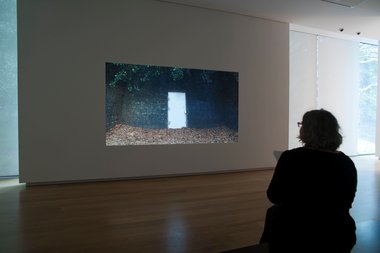
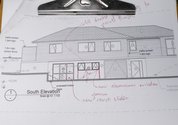
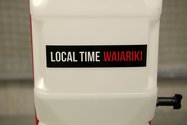
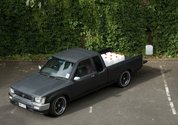
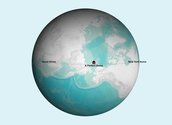
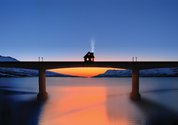
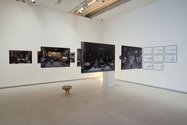
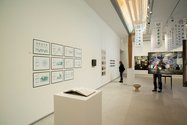
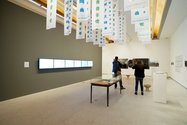
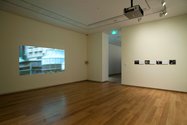
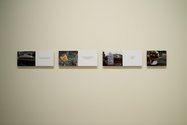
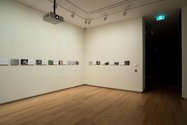
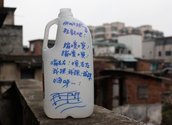

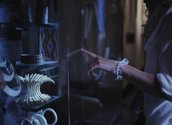
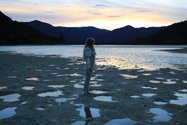
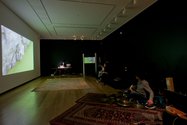
 Advertising in this column
Advertising in this column Two Rooms presents a program of residencies and projects
Two Rooms presents a program of residencies and projects



This Discussion has 6 comments.
Comment
Owen Pratt, 10:06 p.m. 17 June, 2013 #
Do Ho Suh's "They have no ironical or humorous intent."
You must be joking John, they are hilarious.
The Bishan Project is my favourite part of the tra-la-lee, does what the show says on the packet and describes a modern/ancient place, to an observer, in an unusually conventional way.
John Hurrell, 5:35 p.m. 18 June, 2013 #
It's an interesting thing, Owen: how far does one have faith in AV presentations of science or engineering? Irony - pertaining to such research - is never self evident. One could take these proposals at a level of total sincerity.
Owen Pratt, 12:33 p.m. 19 June, 2013 #
Having the display in an art gallery defuses the medium, if this was shown in an airport lounge, or the lobby of the City Council, it would be more plausible, part of the artist's job is to imaginatively push possibilities and the best way to do this is making madness plausible.
John Hurrell, 8:38 a.m. 20 June, 2013 #
'Madness'? Well it is speculative research that ignores common sense and the fact that resources are limited. Makes great audio visual presentatons though.
Ralph Paine, 8:46 p.m. 18 June, 2013 #
“Imagination exists only in so far as it can be expressed by a system of signs which it has itself devised.”—Francois Jacob, ‘The Logic of Life’
I.
April last year, with Occupy, the Arab Spring, and myriad other reported global events running in my mind I went along to Local Time’s Horotiu camp at AUT; mainly to the reading group facilitated by Mr Danny Butt, a sub-component of the larger event. This was a daily sit-down ‘n’ chapter by chapter work through of Gayatri Chakravorty Spivak’s collection ‘An Aesthetic Education in the Era of Globalization’. Despite Mr Butt’s somewhat humourless and over invested relation with the text—not to say my growing unease with some of Spivak’s ideas—I enjoyed the experience and thank Local Time for the opportunity.
But there were other agendas playing in the gallery space apart from that of the reading group: a concern about water and local naming rights, for starters. My wife Fiona Johnston had previously been working in the then Auckland City Council’s CBD Special Projects team and so I was aware of all the research and communications work that they had carried out concerning Maori names, springs, covered-over creek paths, and the old shoreline. But at the time—local time—Mr Butt didn’t seem interested in talking to them (maybe he has since).
Collectively, the historical accounts concerning Tamaki-Makau-rau/Auckland and water are long, complex, and profoundly captivating. They involve the oral records of hapu and iwi, oral settler stories, old borough and city council papers, photocopied family histories, public libraries and museums with their collections of books, films, drawings, maps, watercolours, oils, photographs, plans, correspondence...
There are the archives and published records of: newspapers and other media, trade unions, companies and small businesses, clubs, banks, the military, churches, schools, the old Water and Harbour Boards, the present day Council and its CCOs (including Ports of Auckland), the old ARA and ARC, Wai-o-Hua, Nagti Whatua, Kawerau and other iwi, Watercare, the Waitangi Tribunal and other departments/ministries/courts/units/etc. of Aotearoa/NZ’s central state large and small, plus a long list of other states and municipalities...
Ralph Paine, 8:47 p.m. 18 June, 2013 #
II.
In sum, although labyrinthine and incomplete, the above named archive tells of (configures and reconfigures) the ultimate concern that the peoples of this region have had—will have—for water supply and quality, drainage and waste management, harbour and waterway use (fishing, transport, etc.), beaches, reserves and parks, the ebb and flow of the Gulf, the wild flux of the Tasman, and so on & so forth. In other words, for those who live (& come and go) in this region, as for all peoples, animals, vegetation: “Water is everything” (Thales). Hence the vast archive speaks of political struggle, of workers killed in drains and tunnels, of waterfront strikes, of corruption, paper investment, land theft, exploitation, deforestation, pollution, war... But as Deleuze and Guattari say, we don’t become historical—rather, history is “only the set of almost negative conditions that make possible the experimentation of something that escapes history.” Art and philosophy are constituent of this escape.
Meanwhile, back at Local Time’s Horotiu camp I was picking up on something else, and it was beginning to disturb. At first it seemed like a vague relational aesthetics mixed with PBRF points vibe. But then everything came on stronger and I realised I’d landed myself in one those “artificial hells” of which Claire Bishop speaks. Everything had taken on a ‘we’re-using-you feeling’. I’ll try and describe the semiotic: the gallery had a definite ops room look to it, with print-outs and maps pinned to a white wall, all very Helvetica, a row of computers (Apples, of course!) on slim tables, a stack of mattresses for the injured in a corner, large plastic containers of water.... smart phones rang. Suddenly it all seemed way too oppressively NGO, very private relief agency, as if a moral disaster had recently occurred and Local Time was here to help us all out with that. Also I began to receive bizarre incoming messages (the ether relay?) concerning Alex Monteith’s practice, her speed ‘n’ machines, especially the work involving Air Force helicopters and customized utes.
All this was confirmed for me the Saturday that April/May? of the big anti state asset sales march up Queen Street. Rather than join the collective body of the marchers, some members of Local Time chose to buzz around in the harbour just off Queen’s Wharf in a military-style inflatable. While holding up a banner with red lettering spelling out some conceptual art-inspired cryptogram of protest, other members of the group were on the wharf taking photographs, these (I’m guessing) instantly uploaded to websites ‘n’ Facebook pages. This felt to me a perfectly ‘imaged’ event, pure meme, and now it seems with a smooth transition and repeated semiotic operational at Auckland Triennial, 2013.
Participate
Register to Participate.
Sign in
Sign in to an existing account.